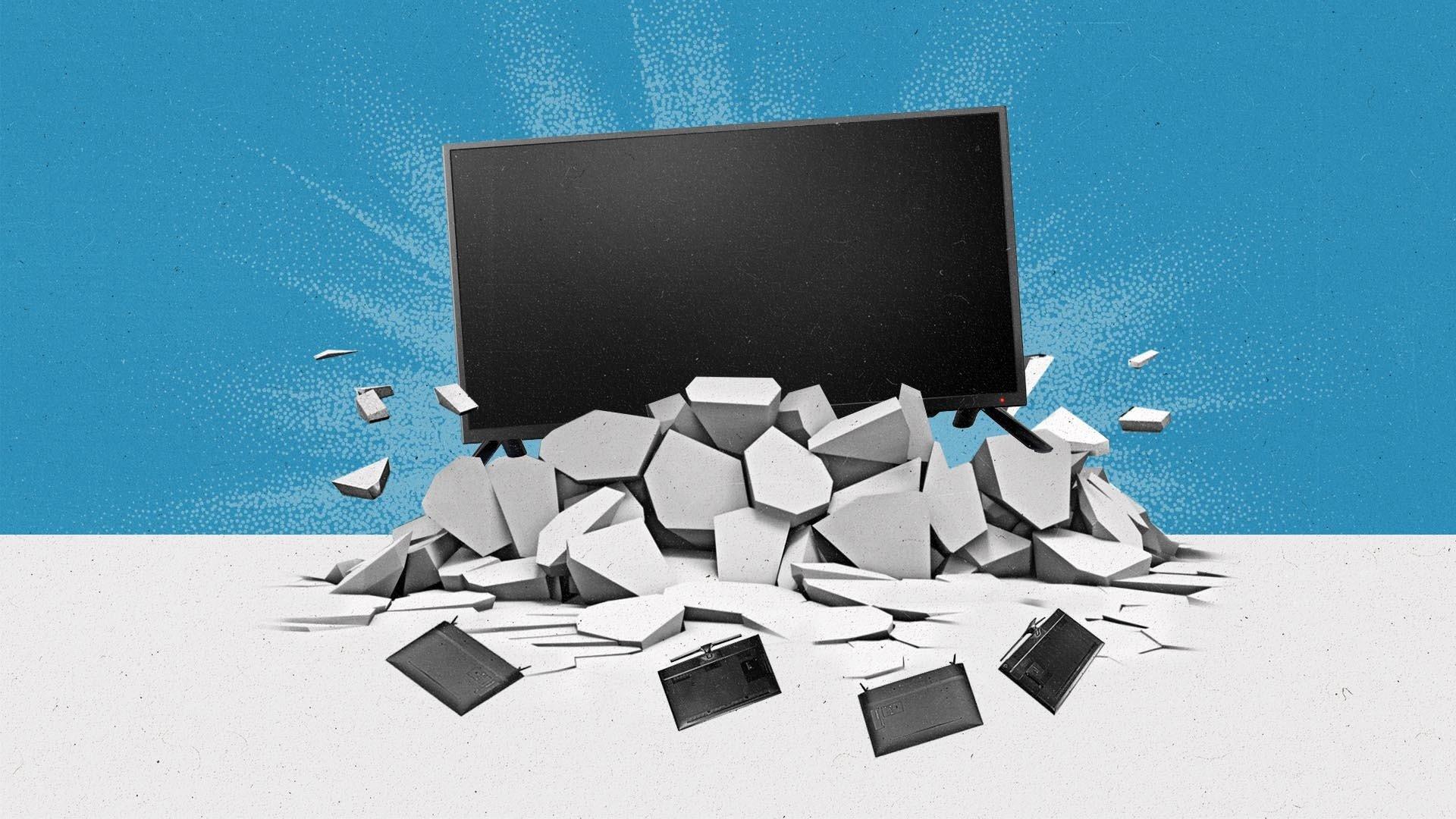To advertisers’ delight, the latest trend in TV is toward 100-inch screens

For many Americans, wall space is at a premium now that the main attraction is bigger than ever. The era of peak TV might be over, but the time of supersize TVs is ramping up. Whether it’s to watch the Super Bowl or stream Disney+’s latest release The Marvels, many of today’s audiences are going for grander viewing experiences, even surpassing triple digits when it comes to TV screen size. It’s a trend that could benefit advertisers.
At the Consumer Electronics Showcase (CES) in Las Vegas this year, one of the major themes (besides all the clamor about transparent TVs) was screen enlargements. Hisense announced one of its largest screens ever at 110 inches for around $3,000, while TCL introduced its “under $20,000” 115-inch TV, both among some of the biggest and brightest to ever be sold on the mass market.
“Screens are getting larger and larger,” said Hisense U.S. CMO David VanderWaal during a panel at CES. “We used to make 55-inch televisions like the one in my living room 10 years ago […] Now our newest television is 110 inches, and it’s only going to go bigger.”
VanderWaal tells The Current that Hisense has seen “tremendous growth” over the past two years, with TVs stretching 75 inches and longer. He says the product updates go back to consumer demand. Simply put, TV viewers want more immersive viewing experiences, he says, due to the rise of streaming TV and an uptick in live sports on more channels, including streamers.
“It’s all about surpassing expectations and trying to stay one step ahead,” he says. “These immersive viewing experiences include more live sports viewing and large increases in streaming movies to better replicate the theater-like visual setting.”
These days, consumers also get more bang for their buck, thanks to technological advancements like OLED screens, 8K resolution and faster processors. “Technology that was only previously available to the elite, is now available to the masses,” explains VanderWaal. “What used to be a $2,000 55-inch TV, now is the cost of a Hisense 75-inch TV. You’re getting nearly double the size for about the same price.”
The demand plays out in the data. A 2022 Omdia study of 40,000 consumers across eight regions found that the biggest feature driving TV purchases was a giant screen, second only to smart-TV functionality. And manufacturers across the world are taking notice. According to global research firm TrendForce, shipment of LCD panels is projected to hit 242 million units in 2024, a growth rate of 3.4%, driven partly by the growing trend of larger product sizes. The report highlights TCL CSOT’s 115-inch panels and China’s HKC plan to reduce production of 32-inch panels, and instead focus on new 40-inch and 85-inch screens.
And it’s not only TV screens that are getting bigger. As electric vehicles become more advanced and user-friendly, their touch-screens are expanding too. Consider Lucid’s new Air, which has a curved 34-inch 5K display, and Mercedes’ new EQS dashboards (56 inches long with three separate touch-screen displays). Smartphones and tablets continue to grow as well, with manufacturers from Samsung to Apple boosting screen size.
“These immersive viewing experiences include more live sports viewing and large increases in streaming movies to better replicate the theater-like visual setting.”
David VanderWaal, CMO, Hisense U.S.
For advertisers, a bigger screen can be beneficial for a number of reasons, including the ability to create more immersive storytelling formats, interactivity and commerce functionality, says Anthony Yell, chief creative officer at Publicis-owned agency Razorfish.
“With a larger screen, you get more space that can be used to integrate additional features and functions at the same time, which can be seamlessly integrated into the content, and embellish or surround it,” says Yell.
Immersive experiences are particularly effective in entertaining Gen Zers, who want to interact with entertainment in new ways, writes Jia Rizvi, founder of fashion brand Studio 15, in an op-ed for Forbes. When it comes to commerce, immersive experiences have “demonstrated higher conversion rates, lower return rates, and higher sales volume,” she writes.
“With immersive features, consumer speculation is being pushed by the wayside,” writes Rizvi. “As a result, Gen Z is more willing to go through with big spends, more satisfied with results, and less likely to renege on those purchases.”
When it comes to engaging with ads, larger screens could make all the difference.
Subscribe to The Current
Subscribe to The Current newsletter